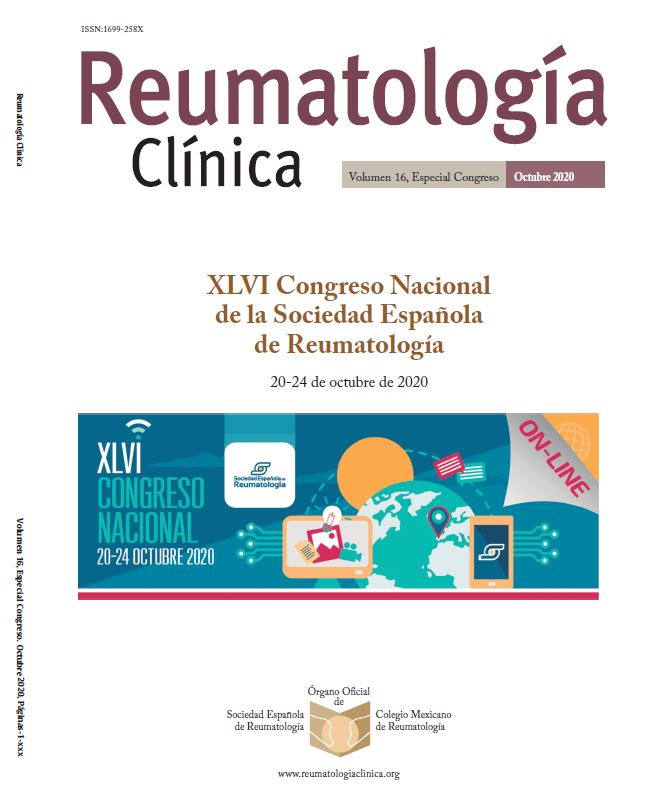CO03 - An in silico, in vitro and clinical study - novel and repurposed drugs to block innate immune responses
1Musculoskeletal Pathology Group. Institute IDIS. Santiago University Clinical Hospital. Santiago de Compostela. 2Research laboratory 9 (NEIRID LAB). Institute of Medical Research. SERGAS. Santiago University Clinical Hospital. Santiago de Compostela. 3Rheumatology Group. Institute IDIS. Santiago University Clinical Hospital. Santiago de Compostela.
Introduction: Joint inflammation is a common feature across multiple rheumatic diseases such as osteoarthritis (OA). In fact, it has been linked to the activation of the innate immune Toll-like receptor 4 (TLR4) by damage-associated molecular patterns. Despite TLR4 shares downstream signalling with the known therapeutic target for rheumatoid arthritis, gout, and other autoinflammatory disease, interleukin 1 receptor (IL1R), there are currently no available drugs aiming to block TLR4. Interestingly, drugs used in the clinical practice for other indications namely amitriptyline (AT), thalidomide (Th) and naloxone (NLX), as well as the novel Asian medicine compound beta boswellic acid (BBA), are known to potentially block TLR4.
Objectives: Determine the ability of AT, Th, NLX and BBA to block TLR4-mediated innate immune responses at the cellular (chondrocytes and synoviocytes) and patient level (rheumatic disease treatment dispensation).
Methods: In silico: the binding affinity was determined by docking analysis (Autodocks-Vina). In vitro: the blocking of TLR4 was determined by RT-PCR, Western Blot and ELISA in human OA chondrocytes (primary) and synoviocytes (SW982). Whole proteome profiling (LC-MALDI/TOFF) was used to study the enrichment or depletion of inflammatory pathways by amitriptyline. Cell viability was tested using the methyl-thiazolyl-tetrazolium (MTT) reagent and nitrite accumulation (nitric oxide production) in cell culture media was assessed by Griess reaction. Clinical data: drug dispensation data was obtained from public health system hospital CHUS (St. de Compostela, Spain) that covers 100,000 citizen. Ethics: this study was approved by the CEIC (CAEIG 2014/310).
Results: Docking analysis of AT, Th, NLX and BBA and beta boswellic acid found a strong binding affinity towards TLR4, even higher than to the TLR4 agonist LPS. Instead, binding affinity to IL1R was found energetically unlikely or impossible. We found that the induction of inflammatory (NOS2, IL6, IL1β, COX2, LCN2 and MCP1) and catabolic (MMP 1, 3, 9, 13 and ADAMTS4) factors by LPS [100 ng/ml] and IL1R agonist IL1β [0.1 ng/ml] could be prevented at the mRNA (up to -97%) and protein level (up to -60%) by therapeutic doses of AT [0.1-1μM], NLX [1.4-100 μM], Th [3-500 μM] or BBA [0.5 -1000 nM]. Moreover, this inhibitory effect was found in both human OA chondrocytes and synoviocytes. Proteome profiling of human chondrocytes was used to validate the inhibitory effect. Starting with amitriptyline we found that its administration inhibited TLR4 receptor, IL1R signalling and depleted innate immune responses, but also the NLRP3 inflammasome signalling, which modulates OA and gout crystal inflammation. Consistent with this and with amitriptyline mediated IL1R signalling inhibition, we found that amitriptyline consumers are less prone to require colchicine drug for gout treatment (-56%) and to palliate gout flares crisis (-85%).
Conclusions: Innate immune responses mediated by TLR4 and IL1R signalling were blocked by the studied compounds in both human OA chondrocytes and synoviocytes. Moreover, amitriptyline consumption reduces the dose of colchicine needed for gout treatment. Considering that amitriptyline, thalidomide, naloxone are being used in other indications, and that Boswellia extract might be used as a nutraceutical, the rheumatologist have now novel tools to manage TLR4/IL1R-mediated inflammation across diverse rheumatic diseases.







